Sunlight for the prevention and treatment of hyperbilirubinemia in term and late preterm neonates
- PMID: 34228352
- PMCID: PMC8259558
- DOI: 10.1002/14651858.CD013277.pub2
Sunlight for the prevention and treatment of hyperbilirubinemia in term and late preterm neonates
Abstract
Background: Acute bilirubin encephalopathy (ABE) and the other serious complications of severe hyperbilirubinemia in the neonate occur far more frequently in low- and middle-income countries (LMIC). This is due to several factors that place babies in LMIC at greater risk for hyperbilirubinemia, including increased prevalence of hematologic disorders leading to hemolysis, increased sepsis, less prenatal or postnatal care, and a lack of resources to treat jaundiced babies. Hospitals and clinics face frequent shortages of functioning phototherapy machines and inconsistent access to electricity to run the machines. Sunlight has the potential to treat hyperbilirubinemia: it contains the wavelengths of light that are produced by phototherapy machines. However, it contains harmful ultraviolet light and infrared radiation, and prolonged exposure has the potential to lead to sunburn, skin damage, and hyperthermia or hypothermia.
Objectives: To evaluate the efficacy of sunlight administered alone or with filtering or amplifying devices for the prevention and treatment of clinical jaundice or laboratory-diagnosed hyperbilirubinemia in term and late preterm neonates.
Search methods: We used the standard search strategy of Cochrane Neonatal to search CENTRAL (2019, Issue 5), MEDLINE, Embase, and CINAHL on 2 May 2019. We also searched clinical trials databases, conference proceedings, and the reference lists of retrieved articles for randomized controlled trials (RCTs), quasi-RCTs, and cluster RCTs. We updated the searches on 1 June 2020.
Selection criteria: We included RCTs, quasi-RCTs, and cluster RCTs. We excluded crossover RCTs. Included studies must have evaluated sunlight (with or without filters or amplification) for the prevention and treatment of hyperbilirubinemia or jaundice in term or late preterm neonates. Neonates must have been enrolled in the study by one-week postnatal age.
Data collection and analysis: We used standard methodologic procedures expected by Cochrane. We used the GRADE approach to assess the certainty of evidence. Our primary outcomes were: use of conventional phototherapy, treatment failure requiring exchange transfusion, ABE, chronic bilirubin encephalopathy, and death.
Main results: We included three RCTs (1103 infants). All three studies had small sample sizes, were unblinded, and were at high risk of bias. We planned to undertake four comparisons, but only found studies reporting on two. Sunlight with or without filters or amplification compared to no treatment for the prevention and treatment of hyperbilirubinemia in term and late preterm neonates One study of twice-daily sunlight exposure (30 to 60 minutes) compared to no treatment reported the incidence of jaundice may be reduced (risk ratio [RR] 0.61, 95% confidence interval [CI] 0.45 to 0.82; risk difference [RD] -0.14, 95% CI -0.22 to -0.06; number needed to treat for an additional beneficial outcome [NNTB] 7, 95% CI 5 to 17; 1 study, 482 infants; very low-certainty evidence) and the number of days that an infant was jaundiced may be reduced (mean difference [MD] -2.20 days, 95% CI -2.60 to -1.80; 1 study, 482 infants; very low-certainty evidence). There were no data on safety or potential harmful effects of the intervention. The study did not assess use of conventional phototherapy, treatment failure requiring exchange transfusion, ABE, and long-term consequences of hyperbilirubinemia. The study showed that sunlight therapy may reduce rehospitalization rates within seven days of discharge for treatment for hyperbilirubinemia, but the evidence was very uncertain (RR 0.55, 95% CI 0.27 to 1.11; RD -0.04, -0.08 to 0.01; 1 study, 482 infants; very low-certainty evidence). Sunlight with or without filters or amplification compared to other sources of phototherapy for the treatment of hyperbilirubinemia in infants with confirmed hyperbilirubinemia Two studies (621 infants) compared the effect of filtered-sunlight exposure to other sources of phototherapy in infants with confirmed hyperbilirubinemia. Filtered-sunlight phototherapy (FSPT) and conventional or intensive electric phototherapy led to a similar number of days of effective treatment (broadly defined as a minimal increase of total serum bilirubin in infants less than 72 hours old and a decrease in total serum bilirubin in infants more than 72 hours old on any day that at least four to five hours of sunlight therapy was available). There may be little or no difference in treatment failure requiring exchange transfusion (typical RR 1.00, 95% CI 0.06 to 15.73; typical RD 0.00, 95% CI -0.01 to 0.01; 2 studies, 621 infants; low-certainty evidence). One study reported ABE, and no infants developed this outcome (RR not estimable; RD 0.00, 95% CI -0.02 to 0.02; 1 study, 174 infants; low-certainty evidence). One study reported death as a reason for study withdrawal; no infants were withdrawn due to death (RR not estimable; typical RD 0.00, 95% CI -0.01 to 0.01; 1 study, 447 infants; low-certainty evidence). Neither study assessed long-term outcomes. Possible harms: both studies showed a probable increased risk for hyperthermia (body temperature greater than 37.5 °C) with FSPT (typical RR 4.39, 95% CI 2.98 to 6.47; typical RD 0.30, 95% CI 0.23 to 0.36; number needed to treat for an additional harmful outcome [NNTH] 3, 95% CI 2 to 4; 2 studies, 621 infants; moderate-certainty evidence). There was probably no difference in hypothermia (body temperature less than 35.5 °C) (typical RR 1.06, 95% CI 0.55 to 2.03; typical RD 0.00, 95% CI -0.03 to 0.04; 2 studies, 621 infants; moderate-certainty evidence).
Authors' conclusions: Sunlight may be an effective adjunct to conventional phototherapy in LMIC settings, may allow for rotational use of limited phototherapy machines, and may be preferable to families as it can allow for increased bonding. Filtration of sunlight to block harmful ultraviolet light and frequent temperature checks for babies under sunlight may be warranted for safety. Sunlight may be effective in preventing hyperbilirubinemia in some cases, but these studies have not demonstrated that sunlight alone is effective for the treatment of hyperbilirubinemia given its sporadic availability and the low or very low certainty of the evidence in these studies.
Copyright © 2021 The Cochrane Collaboration. Published by John Wiley & Sons, Ltd.
Conflict of interest statement
DH: none.
DE is an Associate Editor of Cochrane Neonatal but did not participate in the editorial review of the protocol or review.
KG: is a Co‐Editor of Cochrane Neonatal but did not participate in the editorial review of the protocol or review.
RFS is the Co‐ordinating Editor of Cochrane Neonatal but did not participate in the editorial review of the protocol or review.
Figures
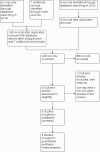
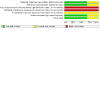


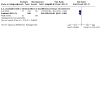
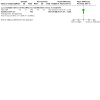
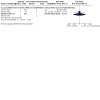
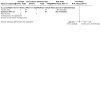
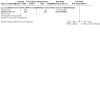
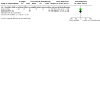
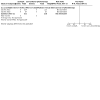
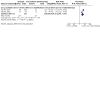
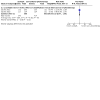
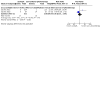
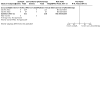
Comment in
-
Commentary on "Sunlight for the Prevention and Treatment of Hyperbilirubinemia in Term and Late-Preterm Neonates".Neonatology. 2022;119(3):295-299. doi: 10.1159/000524319. Epub 2022 May 2. Neonatology. 2022. PMID: 35500555 No abstract available.
Similar articles
-
Cochrane Review: Prophylactic phototherapy for preventing jaundice in preterm or low birth weight infants.Evid Based Child Health. 2013 Jan;8(1):204-49. doi: 10.1002/ebch.1898. Evid Based Child Health. 2013. PMID: 23878128 Review.
-
Use of reflective materials during phototherapy for newborn infants with unconjugated hyperbilirubinaemia.Cochrane Database Syst Rev. 2020 Jul 1;7(7):CD012011. doi: 10.1002/14651858.CD012011.pub2. Cochrane Database Syst Rev. 2020. PMID: 32609375 Free PMC article.
-
Continuous positive airway pressure (CPAP) for respiratory distress in preterm infants.Cochrane Database Syst Rev. 2020 Oct 15;10(10):CD002271. doi: 10.1002/14651858.CD002271.pub3. Cochrane Database Syst Rev. 2020. PMID: 33058208 Free PMC article.
-
Late erythropoiesis-stimulating agents to prevent red blood cell transfusion in preterm or low birth weight infants.Cochrane Database Syst Rev. 2019 Feb 15;2(2):CD004868. doi: 10.1002/14651858.CD004868.pub5. Cochrane Database Syst Rev. 2019. Update in: Cochrane Database Syst Rev. 2020 Jan 28;1:CD004868. doi: 10.1002/14651858.CD004868.pub6. PMID: 30776084 Free PMC article. Updated.
-
Surfactant therapy via thin catheter in preterm infants with or at risk of respiratory distress syndrome.Cochrane Database Syst Rev. 2021 May 10;5(5):CD011672. doi: 10.1002/14651858.CD011672.pub2. Cochrane Database Syst Rev. 2021. PMID: 33970483 Free PMC article.
Cited by
-
Visible blue light inhibits infection and replication of SARS-CoV-2 at doses that are well-tolerated by human respiratory tissue.Sci Rep. 2021 Oct 18;11(1):20595. doi: 10.1038/s41598-021-99917-2. Sci Rep. 2021. PMID: 34663881 Free PMC article.
-
Novel extracorporeal treatment for severe neonatal jaundice: a mathematical modelling study of allo-hemodialysis.Sci Rep. 2024 Sep 19;14(1):21910. doi: 10.1038/s41598-024-72256-8. Sci Rep. 2024. PMID: 39300159 Free PMC article.
-
Development and validation of a prediction model for rebound hyperbilirubinemia: a Chinese neonatal cohort study.Transl Pediatr. 2024 Aug 31;13(8):1302-1311. doi: 10.21037/tp-24-21. Epub 2024 Aug 23. Transl Pediatr. 2024. PMID: 39263300 Free PMC article.
-
Heliotherapy for neonates with severe-to-hazardous hyperbilirubinemia: a randomized controlled, non-inferiority trial.Sci Rep. 2024 Oct 27;14(1):25646. doi: 10.1038/s41598-024-77085-3. Sci Rep. 2024. PMID: 39465350 Free PMC article. Clinical Trial.
-
Knowledge and Attitudes of Parents Regarding Neonatal Jaundice in Bisha City, Saudi Arabia.Cureus. 2023 Sep 8;15(9):e44916. doi: 10.7759/cureus.44916. eCollection 2023 Sep. Cureus. 2023. PMID: 37814740 Free PMC article.
References
References to studies included in this review
Slusher 2015 {published data only}
-
- Slusher TM, Olusanya BO, Vreman HJ, Wong RJ, Brearley AM, Vaucher YE, et al. Treatment of neonatal jaundice with filtered sunlight in Nigerian neonates: study protocol of a non-inferiority, randomized controlled trial. Trials 2013;14:446. [DOI: 10.1186/1745-6215-14-446] [PMID: ] - DOI - PMC - PubMed
Slusher 2018 {published data only}
-
- Slusher TM, Vreman HJ, Brearley AM, Vaucher YE, Wong RJ, Stevenson DK, et al. Filtered sunlight versus intensive electric powered phototherapy in moderate-to-severe neonatal hyperbilirubinaemia: a randomised controlled non-inferiority trial. Lancet Global Health 2018;10:e1122-31. [DOI: 10.1016/S2214-109X(18)30373-5] [PMID: ] - DOI - PubMed
Xiao 2009 {published data only}
-
- Xiao DM, Wu CL, Liu QL. Traditional Chinese medicine bath with the sun on the prevention of neonatal jaundice. Chinese Medicine Modern Distance Education of China 2009;7(3):19. [CENTRAL: CN-00838198]
References to studies excluded from this review
Emokpae 2016 {published data only}
Olusanya 2014 {published data only}
Slusher 2014 {published data only}
Additional references
AAP 2004
Bhutani 1999
Bhutani 2011
Cashore 2000
Ebbesen 2012
GRADEpro GDT [Computer program]
-
- GRADEpro GDT. Version accessed 1 September 2017. Hamilton (ON): McMaster University (developed by Evidence Prime), 2014. Available at gradepro.org.
Guyatt 2017
-
- Guyatt GH, Ebrahim S, Alonso-Coello P, Johnston BC, Mathioudakis AG, Briel M, et al. GRADE guidelines 17: assessing the risk of bias associated with missing participant outcome data in a body of evidence. Journal of Clinical Epidemiology 2017;87:14-22. [DOI: 10.1016/j.jclinepi.2017.05.005] [PMID: ] - DOI - PubMed
Higgins 2011
-
- Higgins JP, Altman DG, Sterne JA: on behalf of the Cochrane Statistical Methods Group and the Cochrane Bias Methods Group. Chapter 8: Assessing risk of bias in included studies. In: Higgins JP, Green S, editor(s). Cochrane Handbook for Systematic Reviews of Interventions Version 5.1.0 (updated March 2011). The Cochrane Collaboration, 2011. Available from training.cochrane.org/handbook/archive/v5.1/.
Higgins 2020
-
- Higgins JP, Thomas J, Chandler J, Cumpston M, Li T, Page MJ, et al, editor(s). Cochrane Handbook for Systematic Reviews of Interventions version 6.1 (updated September 2020). Cochrane, 2020. Available from training.cochrane.org/handbook/archive/v6.1.
Johnson 2002
Kawade 1981
Kuzniewicz 2014
Lucey 1968
-
- Lucey J, Ferreiro M, Hewitt J. Prevention of hyperbilirubinemia of prematurity by phototherapy. Pediatrics 1968;41(6):1047-54. [PMID: ] - PubMed
Maisels 2012
Manning 2007
McGillivray 2016
Moher 2009
Morris 2008
-
- Morris BH, Oh W, Tyson JE, Stevenson DK, Phelps DL, O'Shea TM, et al, NICHD Neonatal Research Network. Aggressive vs. conservative phototherapy for infants with extremely low birth weight. New England Journal of Medicine 2008;359(18):1885-96. [DOI: 10.1056/NEJMoa0803024] [DOI: ] - DOI - PMC - PubMed
NCT01434810
-
- NCT01434810. Treatment of neonatal jaundice with filtered sunlight phototherapy: safety and efficacy in African neonates. clinicaltrials.gov/ct2/show/NCT01434810 (first received 15 September 2011).
Olusanya 2015
Review Manager 2020 [Computer program]
-
- Review Manager 5 (RevMan 5). Version 5.4. Copenhagen: The Cochrane Collaboration, 2020.
Schünemann 2013
-
- Schünemann H, Brożek J, Guyatt G, Oxman A, editor(s). Handbook for grading the quality of evidence and the strength of recommendations using the GRADE approach (updated October 2013). GRADE Working Group, 2013. Available from gdt.guidelinedevelopment.org/app/handbook/handbook.html.
Slusher 2017
Stokowski 2011
United Nations 2020
-
- United Nations. The Sustainable Development Goals Report 2020. unstats.un.org/sdgs/report/2020/ (accessed prior to 5 June 2021).
Wong 2017
-
- Wong RJ, Bhutani VK. Pathogenesis and etiology of unconjugated hyperbilirubinemia in the newborn. www.uptodate.com/contents/pathogenesis-and-etiology-of-unconjugated-hype... (accessed 23 October 2017).
References to other published versions of this review
Publication types
MeSH terms
LinkOut - more resources
Full Text Sources
Miscellaneous

